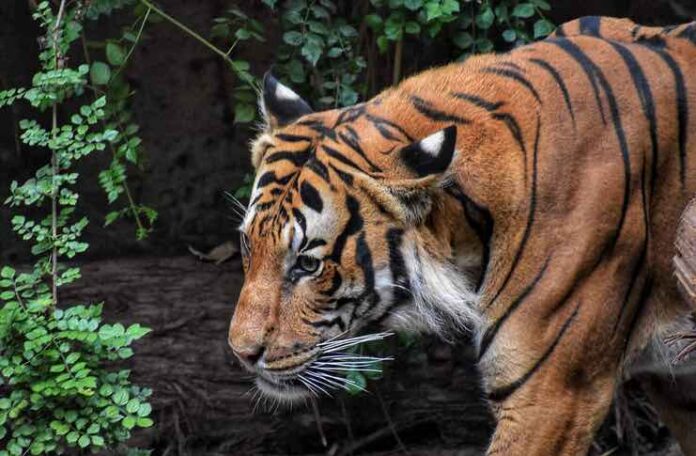Wildlife plays an essential role in making the ecosystem. Their presence is shaping the delicate balance of nature. However, lurking in the shadows is a nefarious enterprise threatening not just individual species but the fabric of biodiversity — wildlife trafficking.
The implications of this illicit trade extend far beyond the smuggling of exotic creatures; they reverberate through ecosystems, economies, and even global health. As the United States grapples with the complexities of wildlife trafficking, it is crucial to unmask the shadows and comprehend the multifaceted implications that ripple through our natural world.
Understanding Wildlife Trafficking
Wildlife trafficking, often considered a silent crisis, encompasses the illegal trade of animals, plants, and their derivatives. From the elusive majesty of endangered species to the vibrant hues of exotic flora, this illicit industry spans the globe, driven by demand for pets, souvenirs, traditional medicine, and even status symbols.
In the United States, a hub for both demand and supply, the implications of wildlife trafficking are felt not only within its borders but across international landscapes. It is a covert web that entangles species ranging from reptiles and birds to mammals and marine life, leaving ecosystems vulnerable and biodiversity imperiled.
Threats to Biodiversity
At the heart of the implications lies an ecological issue as it is triggered by wildlife trafficking. Removing key species disrupts the intricate web of interactions within ecosystems, leading to imbalances that can have cascading effects. The biodiversity loss resulting from this illicit trade not only endangers individual species but threatens the resilience of entire ecosystems.
Iconic and at-risk species like elephants, rhinoceroses, and tigers face the brunt of the illegal wildlife trade. Their tusks, horns, and bones are coveted commodities, driving populations to the brink of extinction. Removing these keystone species can create a domino effect, influencing vegetation prey-predator dynamics and altering the physical landscape.
Economic Impacts
Beyond its ecological toll, wildlife trafficking strains conservation efforts and exacts a significant economic toll. Conservationists engage in a perpetual game of catch-up, allocating resources to combat illegal trade rather than focusing on proactive preservation initiatives.
The economic implications extend to the tourism industry, a vital component of many nations’ economies. As iconic species dwindle in the wild, the allure of eco-tourism diminishes. The loss of revenue from wildlife-based tourism further amplifies the economic toll of trafficking.
Global Health at Risk
The implications of wildlife trafficking extend to the realm of global health, introducing the ominous specter of zoonotic diseases. The illegal trade of wildlife brings humans into close contact with species that may harbor pathogens capable of jumping the species barrier. This proximity increases the risk of zoonotic spillover events, where diseases leap from animals to humans.
The current global landscape, marred by the COVID-19 pandemic, is a stark reminder of the potential ramifications. Many zoonotic diseases, including Ebola, SARS, and COVID-19, are believed to have originated in wildlife. Wildlife trafficking, by intensifying human-wildlife interfaces, amplifies the risk of future pandemics, underscoring the urgent need for robust measures to curb the illegal trade.
Criminal Networks and National Security
Wildlife trafficking is not a solo act; it operates within a broader nexus of criminal activities that threaten national security. The illicit trade often intertwines with other transnational crimes, such as drug trafficking, arms smuggling, and money laundering. Criminal networks engaged in wildlife trafficking leverage the same routes and channels used for other illegal activities, creating a complex web that challenges law enforcement. The Law Offices of David A. Breston can help you navigate the legal realm of criminal defense and help you get your charges dismissed.
The revenue generated from wildlife trafficking often fuels these criminal networks, contributing to instability in regions where the trade is prevalent. The linkages between wildlife trafficking and broader criminal enterprises necessitate a multifaceted approach that addresses the interconnected nature of these threats.
Legal and Regulatory Challenges
Enforcing laws and regulations against wildlife trafficking presents a formidable challenge. The clandestine nature of the trade, coupled with its global reach, stretches the capacity of law enforcement agencies. Legal frameworks often lag behind the rapidly evolving tactics of traffickers, creating loopholes that allow them to operate with relative impunity.
Coordinating international efforts to combat wildlife trafficking is further complicated by differences in legal systems, enforcement capacities, and varying levels of political will. The tangle of legal and regulatory challenges underscores the need for enhanced collaboration, harmonized legislation, and a global commitment to curb illicit trade.
Public Awareness and Demand Reduction
Addressing the implications of wildlife trafficking necessitates a paradigm shift in public awareness and consumer behavior. The demand for exotic pets, traditional medicines, and wildlife products fuels the trade, creating a demand-driven cycle that traffickers exploit. Public education campaigns emphasizing the ecological and ethical consequences of wildlife trafficking can play a pivotal role in reducing demand.
Shaping a sustainable future also involves empowering local communities and fostering alternative livelihoods. Engaging communities in conservation efforts, providing economic incentives for wildlife preservation, and promoting responsible tourism contribute to a holistic approach that addresses the root causes of wildlife trafficking.
Watch this video to learn more:
Technological Innovations
In the battle against wildlife trafficking, technology emerges as a powerful ally. Advanced surveillance systems, artificial intelligence, and DNA analysis offer innovative tools for monitoring, detecting, and combating illegal trade. Drones, satellite imagery, and data analytics enhance the capacity of conservationists and law enforcement to track traffickers and protect vulnerable species.
Technological innovations also play a role in raising public awareness and mobilizing support for conservation initiatives. Social media campaigns, online platforms, and mobile applications provide channels for disseminating information, engaging the public, and fostering a global community committed to wildlife preservation.
Conclusion
As the implications of wildlife trafficking cast a long shadow over ecosystems, economies, and global health, the imperative to act becomes resoundingly clear. Unmasking the shadows requires a collective effort, transcending borders and fostering a shared commitment to conservation.
Governments, conservation organizations, law enforcement agencies, and the public must unite against the forces that drive wildlife trafficking. Strengthening legal frameworks, enhancing enforcement capacities, promoting public awareness, and leveraging technological innovations are crucial components of a comprehensive strategy.
In confronting the multifaceted implications of wildlife trafficking, we are not merely safeguarding the future of individual species; we are preserving the intricate web of life that sustains us all. The call to unite against the shadows is to protect biodiversity, mitigate global health risks, and secure a harmonious coexistence with our planet’s diverse species.

Marie Miguel has been a writing and research expert for nearly a decade, covering a variety of health-related topics. Currently, she is contributing to the expansion and growth of a free online mental health resource with Mind-Diagnostics.org. With an interest and dedication to addressing stigmas associated with mental health, she continues to specifically target subjects related to anxiety and depression.



